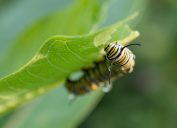9 Natural Weed Killers That Actually Work
Keep your garden healthy with these natural, effective weed killers.
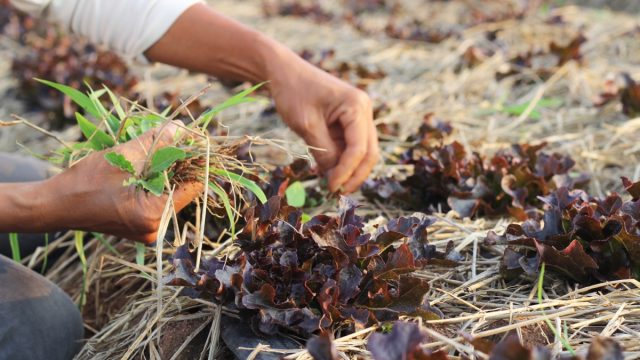
When tending to your garden, the last thing you want to do is use harmful chemicals and pollutants that can seep into the soil and cause long-term damage to your beloved plants, flowers, and vegetables. All too often, though, the products you need to use to get rid of weeds seem to contain those toxic chemicals. Thankfully, there are gentler solutions for eliminating those pesky plants and keeping your garden growing strong. If you find the weeds in your garden to be an eyesore, consider trying these expert-approved, natural weed killers. It's time to wage war on those weeds!
1
Use a homemade white vinegar spray

Many experts suggest using white vinegar to rid your land of weeds. Rooted, a New York City nursery that ships nationwide, swears by a weed-killing concoction that contains the acidic ingredient along with other common household items.
"Combine a gallon of white vinegar with one tablespoon of dish soap and one cup of table salt. Mix it all up, put it in a spray bottle, and voila: natural weed killer!" says the Rooted team. They suggests spraying the weeds when the sun is at its strongest for maximum effectiveness.
2
Use a salt and water spray

If you don't want to take the time to mix a more complicated weed-killing spray, try something simpler, like salt and water. "It's well-known that salting the Earth can have devastating effects on plants. However, when mixed with water, you can create an all-natural weed killer," says Lewis Peters of Online Turf, who relies on this blend to provide weed-free products. However, he cautions users to apply the spray "gradually over time, as applying too much salt can have devastating effects on your soil."
3
Try mulching

Lay down the law by laying down some mulch. Elizabeth Warburton-Smith, executive director of Rita Gardens, suggests "using a thick, four-to-six-inch layer of wood chip mulch on top of your soil" as it "smothers any weed seeds touching the soil underneath." It also "keeps your soil dust-free in the summer and mud-free when it rains and creates the perfect environment for living organisms that help build soil."
If you do use mulch as a natural weed killer, just be careful to only use it on the top layer of your soil's surface. Placing the mulch in your soil could cause old weed seeds to resurface and sprout.
4
Smother with newspaper or cardboard
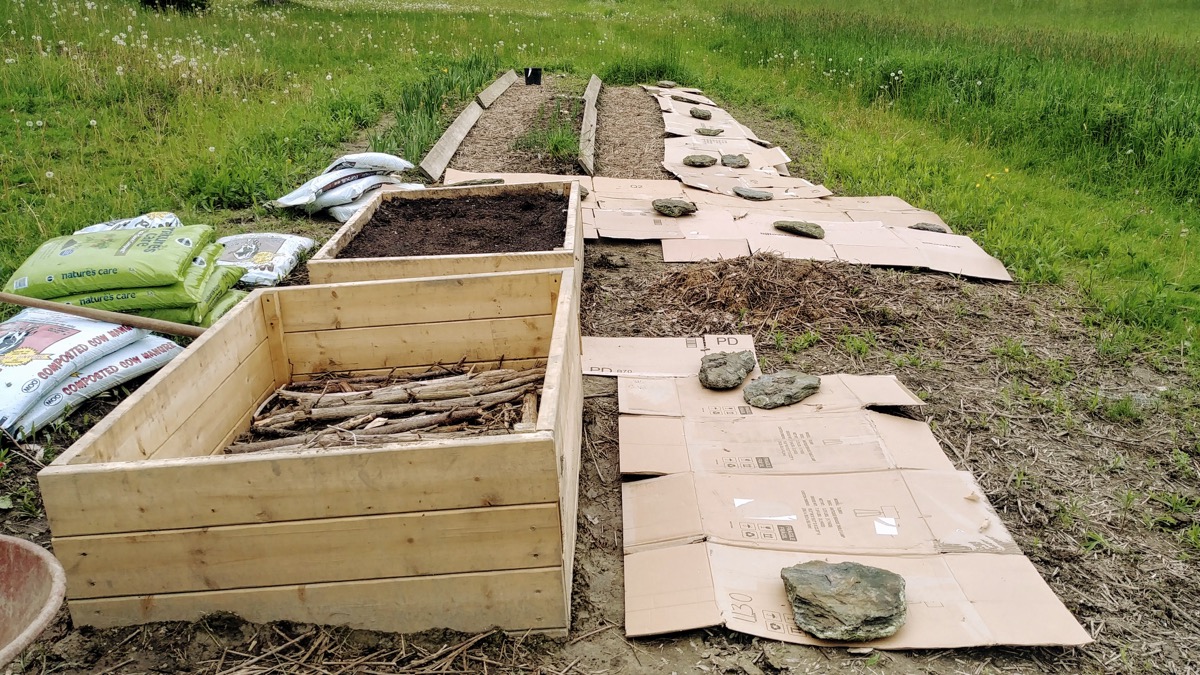
Though mulch is the best-looking smothering agent, there are other options. For a stronger (albeit more unsightly) smothering agent, try using newspaper or cardboard. "By doing this, you're blocking off air and light, which will kill most any weed within about two weeks," says Kevin Espiritu, founder of Epic Gardening and author of Field Guide to Urban Gardening. "The downside is it kills everything below the layer of newspaper or cardboard, so this is an option for extremely weedy areas."
5
Use boiling water

This technique is perfect when you are only trying to target specific spots, like a crack in the sidewalk. "Simply boil water and carefully pour over the area. You won't kill weeds down to their roots, but it's enough to get [the area] nice and tidy for a few months at a time," says Espiritu.
6
Plant cover crops
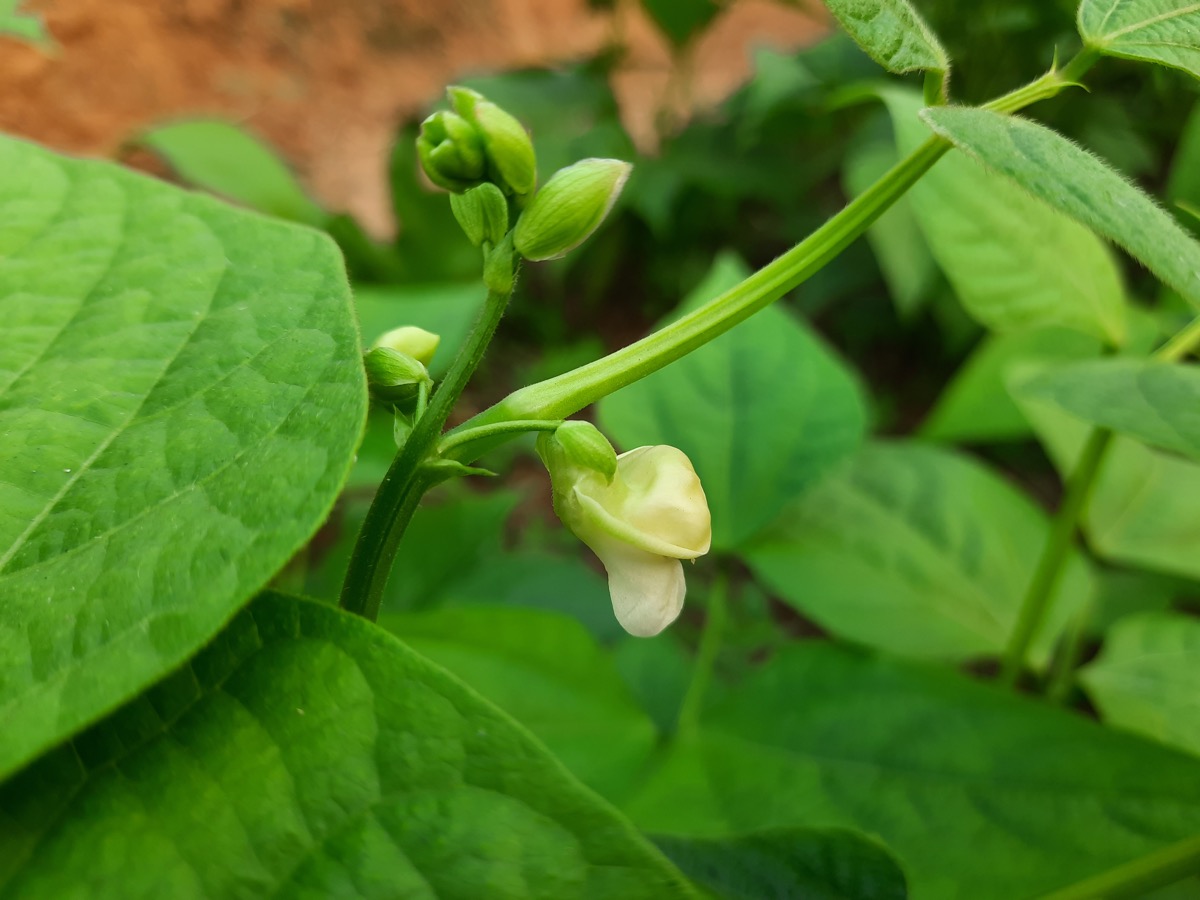
Planting cover crops between your more delicate plants can do wonders for weed control. "Cover crops include clover, buckwheat, and legumes. Legumes have the magical skill of collecting nitrogen from the air, and through a complex process, release it back into the soil," explains Warburton-Smith. "Not only will these cover crops dominate the surface and help prevent other not-so-desirable plants from growing, but they will also feed the soil, creating as much as 100 pounds of pure, organic nitrogen per acre of cover crop." As a bonus, you can use the delicious legumes you grow in your kitchen!
7
Yield a weed torch
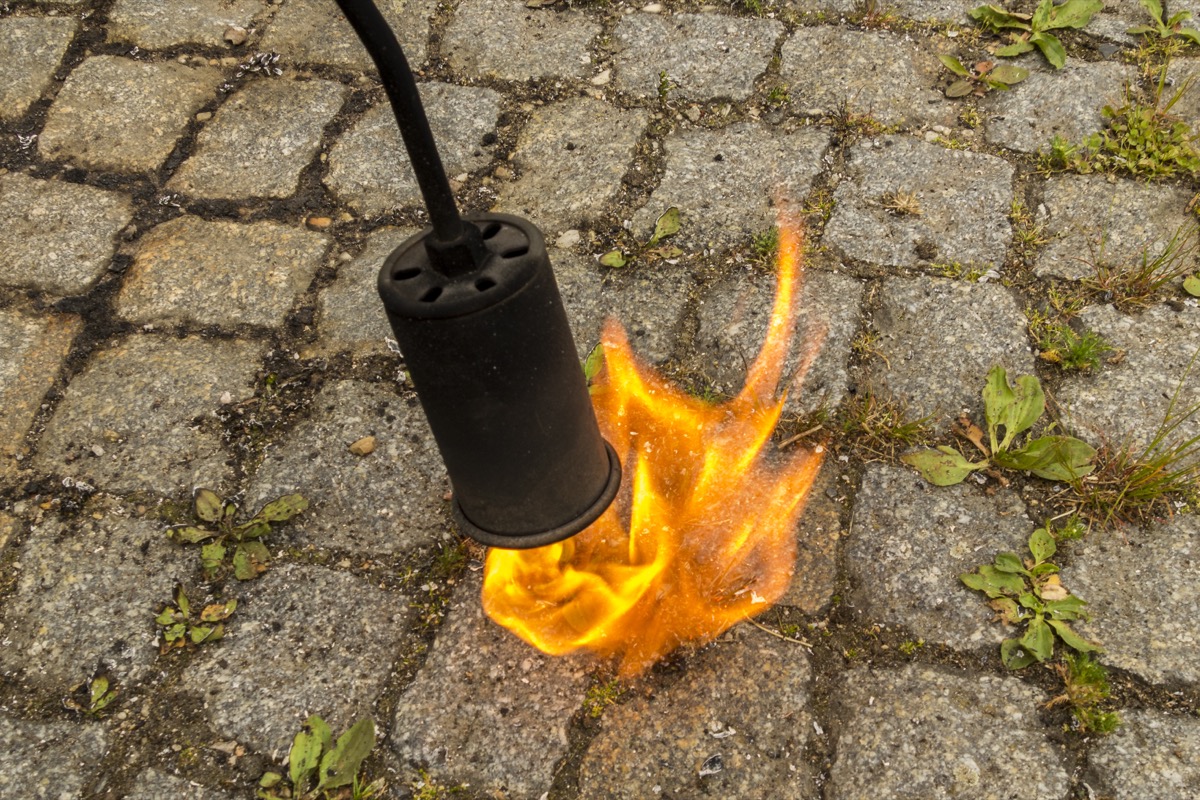
This method of weeding involves a propane-fueled torch that will "heat up the plant's cells to the point of boiling, at which point it will no longer be viable," explains Warburton-Smith. There are various brands of weed torches, the most popular being the Weed Dragon.
8
Pull the weeds at the roots
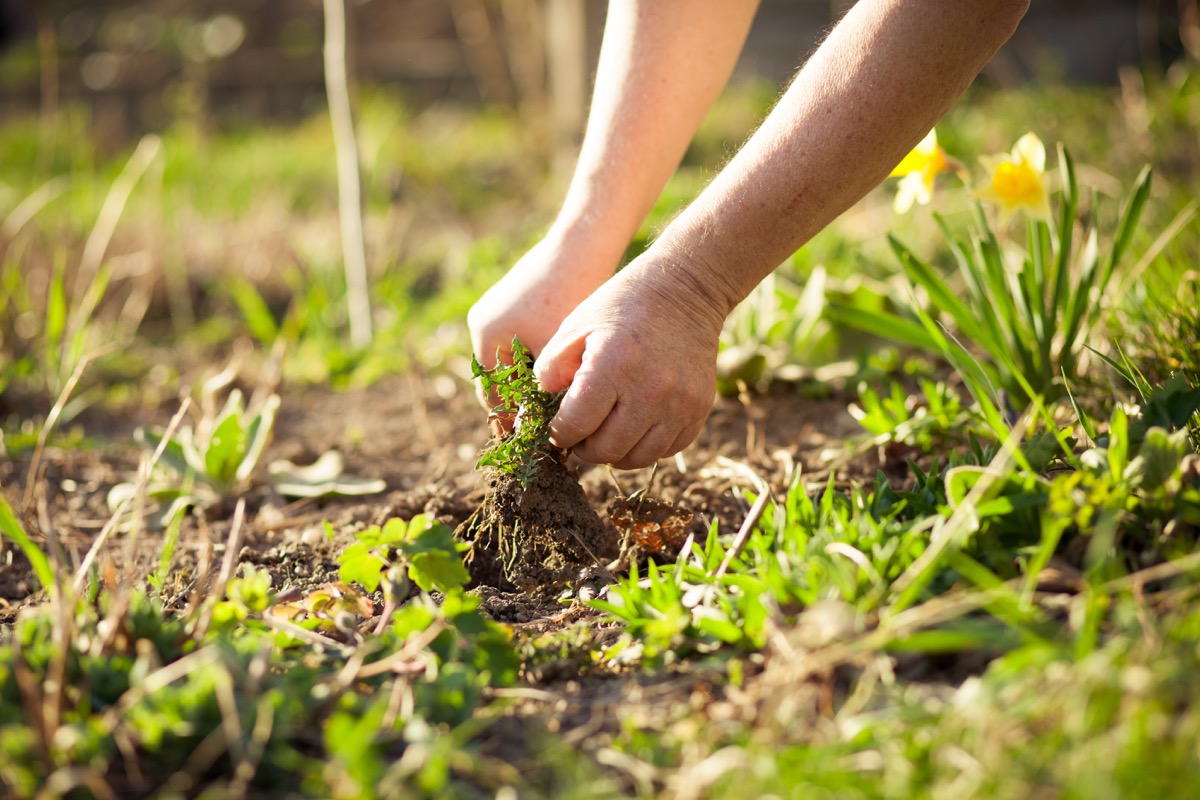
Pulling weeds at the root is one of the easiest and most natural ways to get rid of them for good. "Ideally, you should dig out the weeds as soon as possible so you can prevent them from seeding and multiplying further," says landscaper Peter Miller, founder of Gardening Stuffs. "The best time to weed is while the soil is still moist and plants are still young. Weeds should be pulled right at their base gently so as not to disturb the surrounding soil." Using a spade or a weed fork can make this process a bit easier and more effective.
9
Eliminate tilling
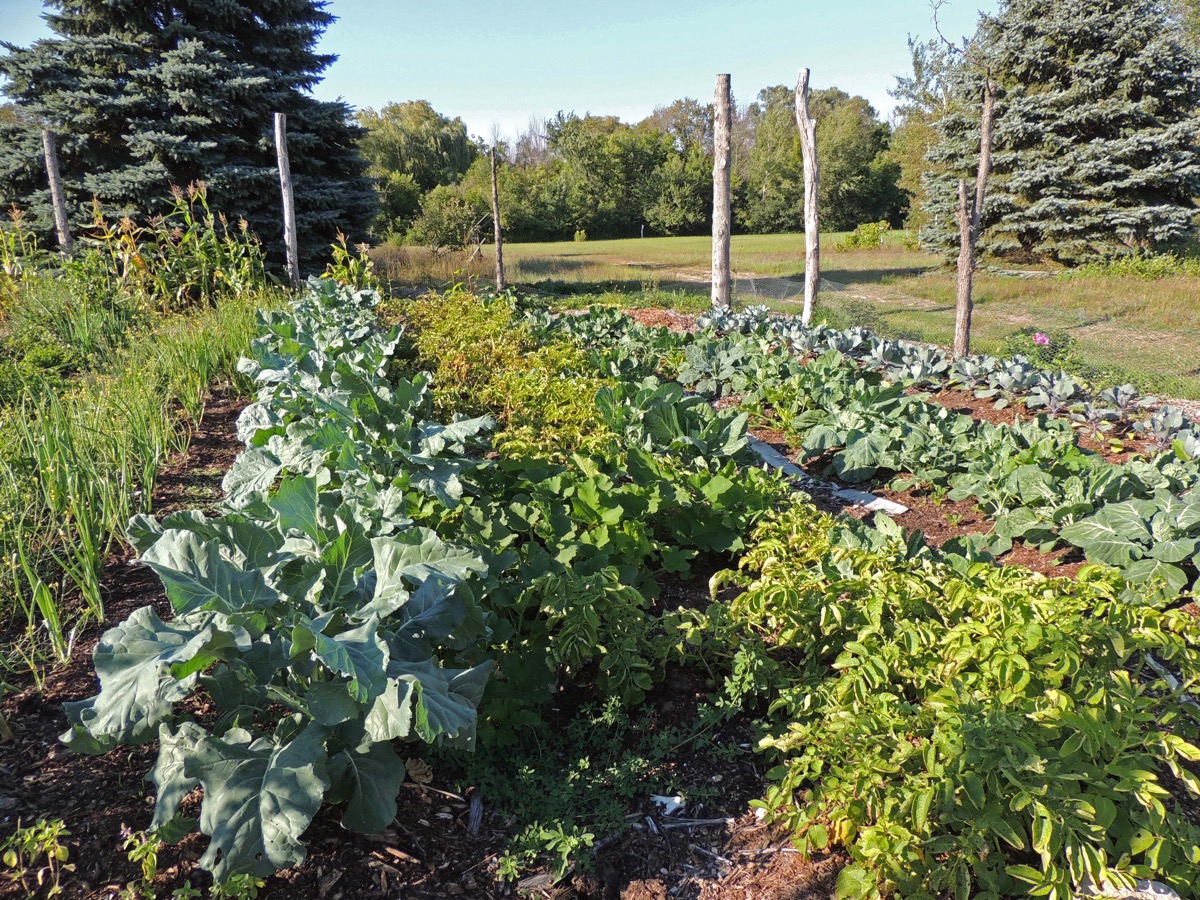
Consider enforcing a "no-till" policy in your garden. There are many advantages to "no-till" farming, a lack of weeds being one of them.
"Implementing the 'no-till' growing method will help prevent weeds because it keeps the soil covered and avoids exposing weed seeds to bare soil and sunlight, which will allow them to germinate," explains Warburton-Smith.



